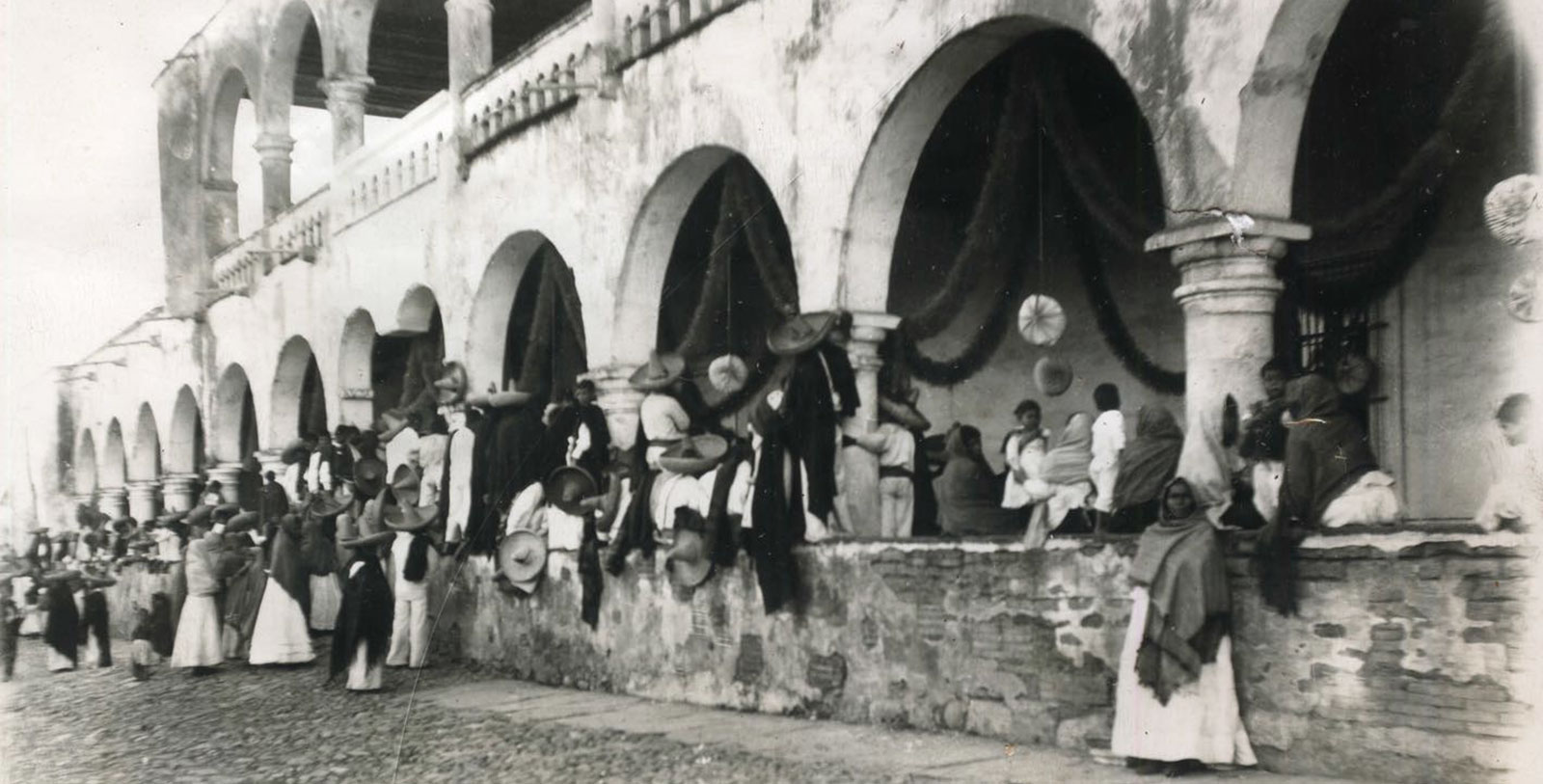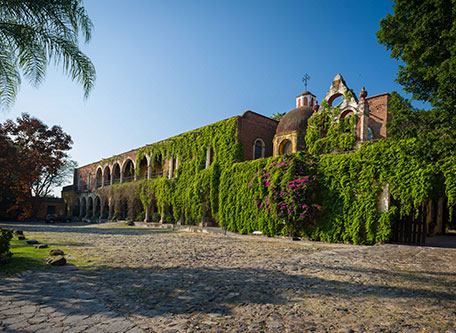Receive for Free - Discover & Explore eNewsletter monthly with advance notice of special offers, packages, and insider savings from 10% - 30% off Best Available Rates at selected hotels.
history
Discover Hacienda el Carmen Hotel & Spa, which was once known as Hacienda Santa María de Miraflores during the 16th century.
Early information about the Hacienda El Carmen Hotel & Spa refers to the year 1569, in which Merodio de Velasco bought the structure from Beatriz de Castro. Known as Hacienda Santa María de Miraflores at the time, Velasco subsequently sold the estate to Gabriel de Aguila some five years later. Aguila’s descendants would continue to work the land until 1693. Afterwards, the hacienda was owned by Doña Francisca Figueroa Viuda de Aguila, who along with her second husband Don Juan González, willed the hacienda to the Carmelitas. Due to the agricultural profits that the hacienda yielded to the Carmelitas, they were able to create the Ex Convento del Carmen in downtown Guadalajara. Several historical documents from the time even cite the hacienda as one of the most productive farms in the entire region. The hacienda still produces crops and goods for consumption on the hacienda grounds, including sugar cane, corn, wheat, vegetables, and some citrus orchards.
The Carmelitas remained the stewards of the site until the mid-1800s, when the lands were eventually awarded to General Florentino Cueryo. Upon his death, his widow, Doña Nicolasa Ramírez I, sold the hotel to Don Luciano Gómez and his brothers in 1883. In his will, Don Luciano Gómez left the hacienda to Francisco L. Corcuera Gómez and Luis L. Corcuera Gómez. Upon Francisco’s death, he left it wholly to his brother Luis. It was at this time that the lands of the hacienda were repartitioned to the settlements of El Carmen, Chapulimita, La Peña, San Ignacio, El Amarillo, and other nearby pueblos. This left only a small estate that has been maintained until this very day. The hacienda then passed on from the Corcueras to the Buenrostro family, which later came into the care of Don Pablo Serrano Estrada. From here it was sold to Serrano’s son-in-law Don Joaquín Baeza del Monte, the current owner. Now known as the Hacienda el Carmen Hotel & Spa, this marvelous boutique hotel is among the best places to stay in all of Jalisco.
-
About the Location +
Known as Nueva Galicia during the Virreinato Period, the region once extended a bit more than 100,000 square kilometers upon the arrival of the Europeans. Towns were inhabited by diverse Mesoamerican ethnicities in such territories like Colima, Xalisco, Tonallán, Cascaná, Xochitepec, Contixpac, Aztlán, and Chiametla. The conquest and colonization of this land began at the end of 1522 with the arrival of Cristobal de Olid, who was a contemporary of Hernán Cortes. Olid did not venture far however, as he was ordered back to Spain shortly thereafter. In the meantime, Cortés entrusted Gonzalo de Sandoval to continue the conquest. Sandoval later founded a Spanish town in Colima in the year 1523. The following year, a relative of Cortés, Alonso de Avalos, also arrived to the south of Jalisco. Avalos inherited from his older brother an extensive territory that went from Sayula to Atoyac to Zacoalco and Cocula to the shores of Lake Chapala. For many years, this land was known as the “Avalos Providence.” In 1529, Nuño Beltrán de Guzmán continued the conquest of other lands in the northeast called “Teules-Chicimecas.” Guzmán was subsequently ordered to call it New Reign of Galicia and the capitol was named Compostela. It was at this time that the first Spanish settlers began occupying the grounds upon which Hacienda El Carmen Hotel & Spa now resides. In 1530, Nuño de Guzmán departed from Tonalá and headed for the town of Tala. The following day, he walked to the providence and town of Etzatlán to make it part of his territory. He walked four leagues through a very fertile valley full of springs and water and arrived at Etzatlan and Magdalena Lake. On Thursday, April 5, 1530, he decided to rest there for four months. But as his army of 400 Spanish conquistadors and almost 20,000 allied indigenous tribes had consumed all the provisions that had been administered. He then called upon the prisoners, as was the custom, and requested that they, along with the army, attack the lake area and leave only the city of Etzatlán. The citizens left this town after the army stayed to retire. The town also served as a post for the monks of San Francisco.
-
About the Architecture +
The initial work for the Colonial-style Hacienda El Carmen Hotel & Spa began in 1722 and was completed five years later. A second, Neoclassical section of the hacienda was completed at the end of the 19th century. The building materials used were commonly found in the area – adobe, brick, quarried stone, and rocks. Other materials, such as lumber from mesquite, pine, and cedar trees came from the hills of Tequila and Ameca. The metalwork was completed by artisans from the Lagos de Moreno area, and the clay and ceramic tiled flooring was all laid by hand. The hacienda’s furniture is the result of a collection that spans many ages, styles, and origins. Paintings by unknown artists from the Colonial age and decorative cover the walls of this magnificent holiday destination. Sculptures of quarried rock date back to the 18th and 19th centuries. The diverse decorative objects found throughout the hacienda were nearly all acquired from local towns nearby, including several rare, pre-Columbian pieces. Additional antiques onsite include many historic European candles, which date back several centuries.





























